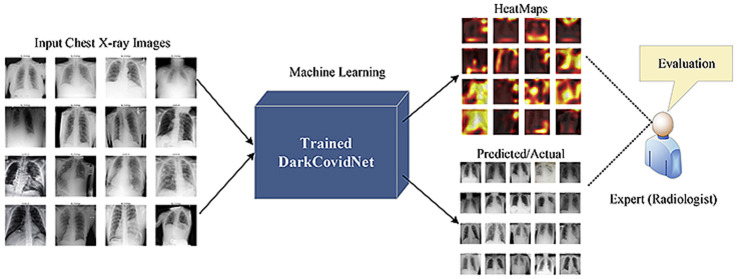- Record: found
- Abstract: found
- Article: not found
Automated detection of COVID-19 cases using deep neural networks with X-ray images

Read this article at
Abstract
The novel coronavirus 2019 (COVID-2019), which first appeared in Wuhan city of China in December 2019, spread rapidly around the world and became a pandemic. It has caused a devastating effect on both daily lives, public health, and the global economy. It is critical to detect the positive cases as early as possible so as to prevent the further spread of this epidemic and to quickly treat affected patients. The need for auxiliary diagnostic tools has increased as there are no accurate automated toolkits available. Recent findings obtained using radiology imaging techniques suggest that such images contain salient information about the COVID-19 virus. Application of advanced artificial intelligence (AI) techniques coupled with radiological imaging can be helpful for the accurate detection of this disease, and can also be assistive to overcome the problem of a lack of specialized physicians in remote villages. In this study, a new model for automatic COVID-19 detection using raw chest X-ray images is presented. The proposed model is developed to provide accurate diagnostics for binary classification (COVID vs. No-Findings) and multi-class classification (COVID vs. No-Findings vs. Pneumonia). Our model produced a classification accuracy of 98.08% for binary classes and 87.02% for multi-class cases. The DarkNet model was used in our study as a classifier for the you only look once (YOLO) real time object detection system. We implemented 17 convolutional layers and introduced different filtering on each layer. Our model (available at ( https://github.com/muhammedtalo/COVID-19)) can be employed to assist radiologists in validating their initial screening, and can also be employed via cloud to immediately screen patients.
Graphical abstract
Highlights
-
•
Proposed deep model for early detection of COVID-19 cases using X-ray images.
-
•
Obtained accuracy of 98.08% and 87.02% for binary and multi-classes.
-
•
Proposed heatmaps can help the radiologists to locate the affected regions on chest X-rays.
-
•
DarkCovidNet model can assist the clinicians to make faster and accurate diagnosis.
Related collections
Most cited references49
- Record: found
- Abstract: found
- Article: not found
Clinical features of patients infected with 2019 novel coronavirus in Wuhan, China
- Record: found
- Abstract: found
- Article: not found

